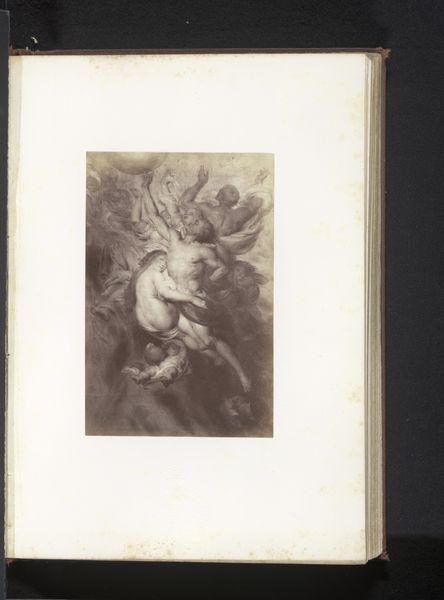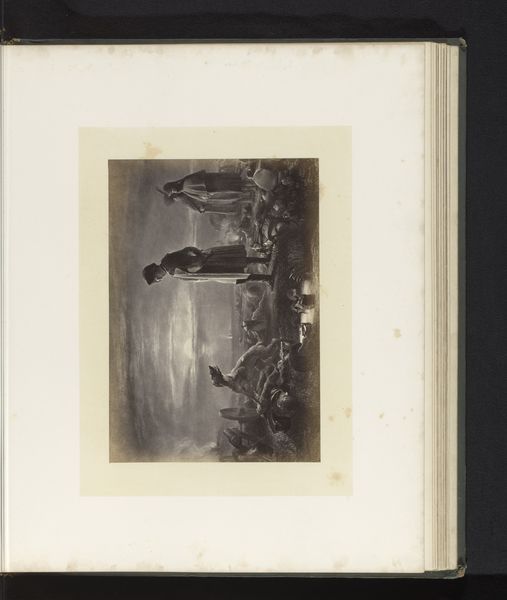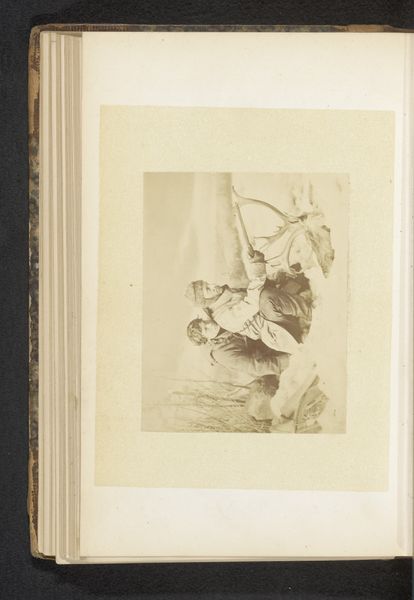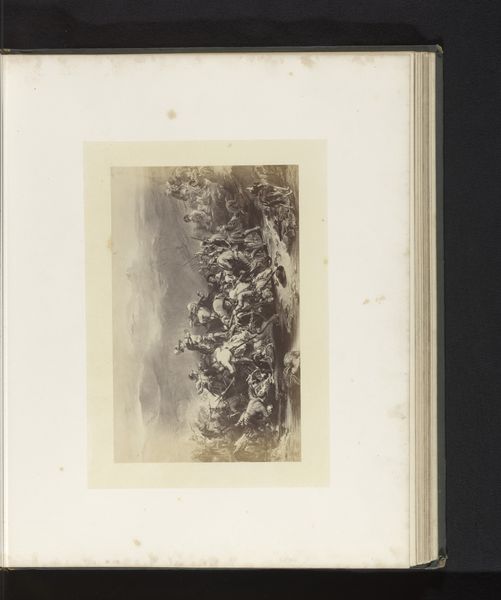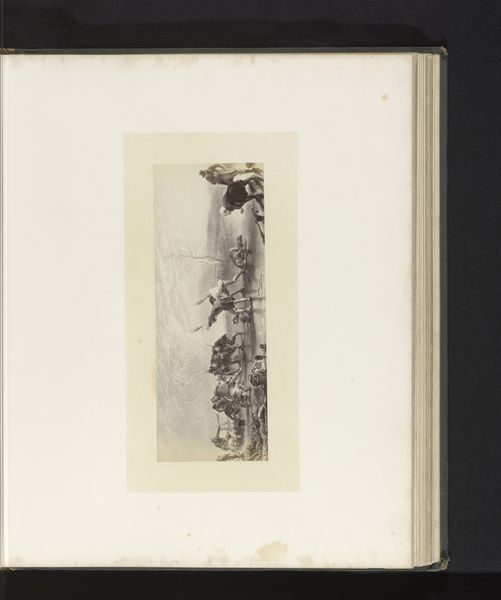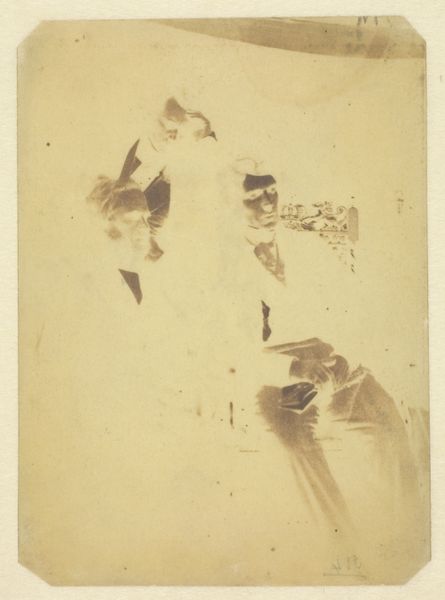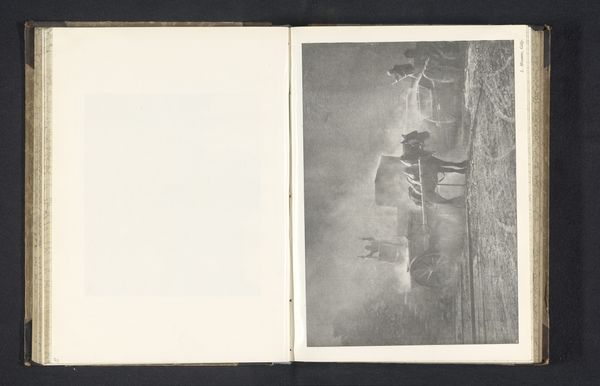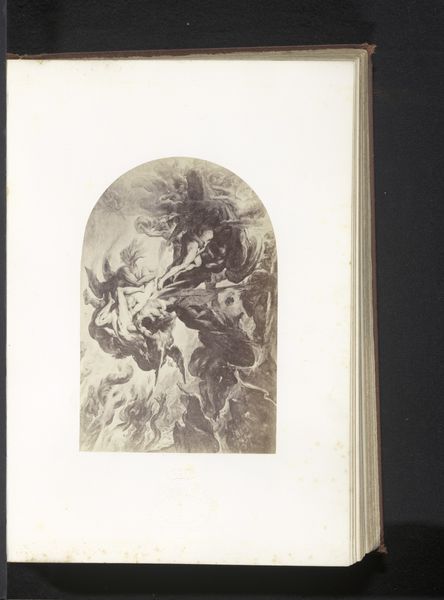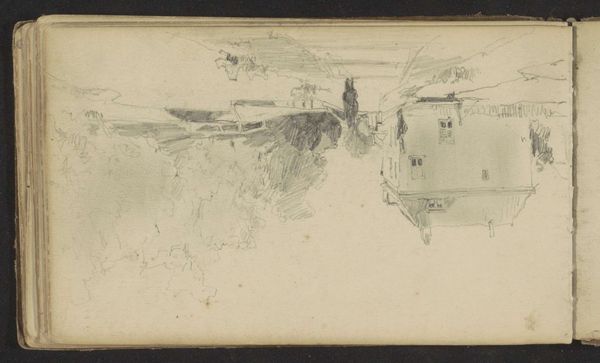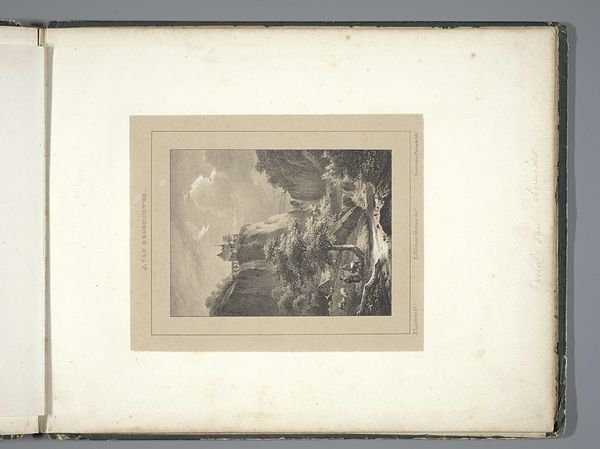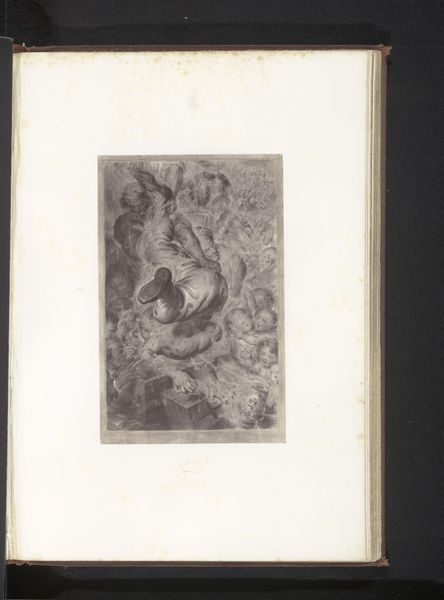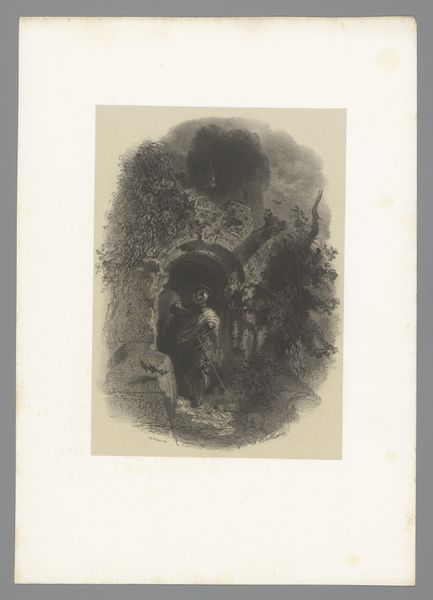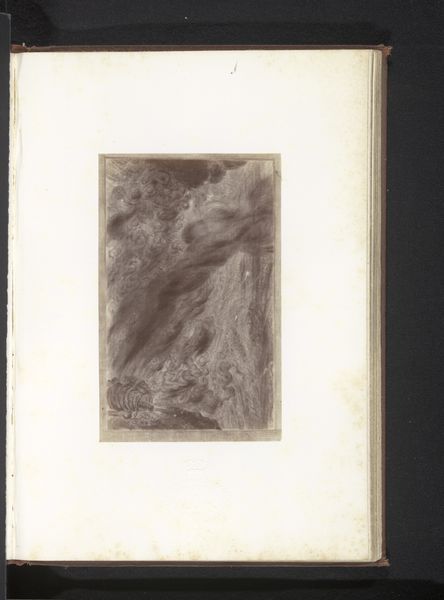
Fotoreproductie van een schilderij van een vallende engel c. 1865 - 1900
0:00
0:00
photography, albumen-print
#
fairy-painting
#
allegory
#
sculpture
#
figuration
#
photography
#
framed image
#
symbolism
#
albumen-print
Dimensions: height 180 mm, width 130 mm
Copyright: Rijks Museum: Open Domain
Editor: So, here we have a photogravure called "Fotoreproductie van een schilderij van een vallende engel," placing it sometime between 1865 and 1900, attributed to Laurens Lodewijk Kleijn. The faded albumen print gives this sense of ghostly motion; I am curious to hear your insights, Professor. What strikes you most about this piece? Curator: I see the intersection of photographic reproduction and symbolic painting. This era wrestled with photography’s ability to mechanically replicate art and nature. It makes me think about mass consumption in visual culture and what that accessibility means in art and labor. Is this democratization of image, or the erosion of craft? What labor goes into making multiple identical objects? What new art market forces arise to push art’s value, like originality or craftsmanship, even higher to retain value? Editor: Interesting! So you see this photograph not just as an image, but as a point where different modes of artistic production collide? Curator: Precisely! The albumen print process itself is incredibly laborious, involving coating paper with egg whites and silver nitrate, exposing it to light…a real alchemical undertaking. Is photography undermining traditional painters, or opening up avenues of craft and labor to be explored and legitimized? What is gained? What is lost when art, made accessible and plentiful in copies, now competes for market dominance through originality? What value does something become to us when there are one, ten, thousands more copies? Editor: It's almost like this angel falling is symbolic of the changes happening in the art world at that time. Curator: In a way, yes! Or, consider the angel – typically representing divine intervention – as now mediated by a mechanical process. Is divine inspiration now reproducible? Editor: That's given me a whole new perspective. I appreciate thinking about how its means of production, this combination of methods and labor, and new economic art factors can influence its meaning! Curator: Indeed. Looking at the artwork this way exposes the socioeconomic framework around it, rather than just aesthetic concerns.
Comments
No comments
Be the first to comment and join the conversation on the ultimate creative platform.
